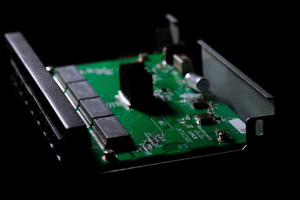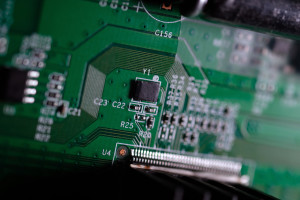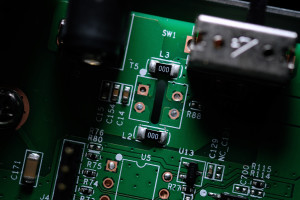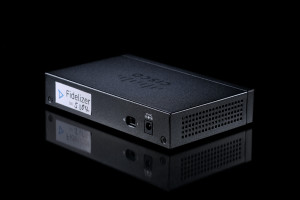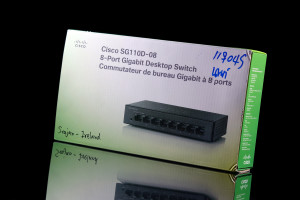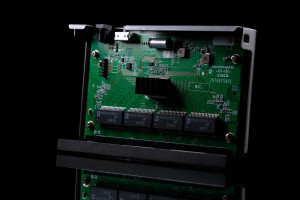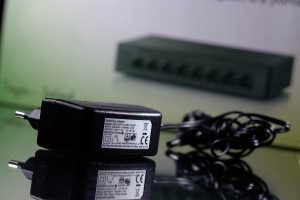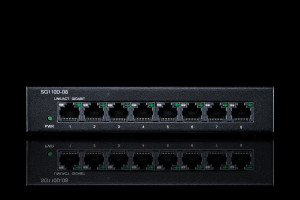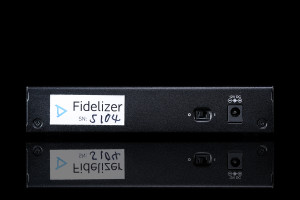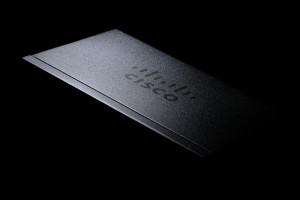Telegärtner M12 Switch Magic reviewed in July 2019 not only audibly contributed to my setup’s performance, but surprised me by its potency. This report’s device – Fidelizer EtherStream – is functionally alike and sold for far less, thus it’s fair to ask about its own effectiveness. Enjoy!
Introduction
It’s interesting how things changed in the audio industry over last several years. These days many of us pay attention to stuff viewed not too long ago insignificant and not worthy any investments; mechanical grounding, power, USB treatment, network and so on so forth. Well, at least I know I do. The audio hobby is of course partially fueled by skeptics oftentimes keen to label listed subjects as snake oil, however I don’t share the mindset. As subjective and flawed as my own approach might seem, I draw my own conclusions from familiarity with hardware through listening and not an oscilloscope’s probes. In this context, my own experience and understanding of many audio devices naturally increased and expanded along with my exposure to them, but that’s not the best part.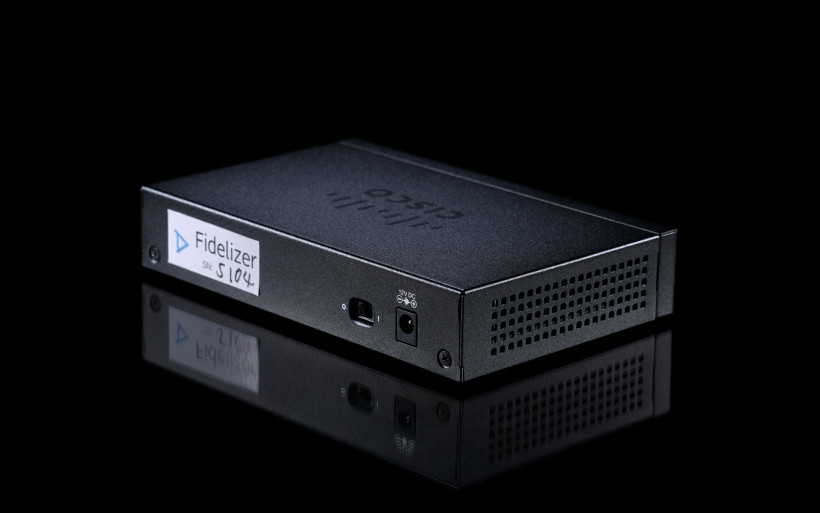 Although in the past I considered a number of accessories as irrelevant to sound quality, some of them introduced changes meaningful enough to rejig my importance roster in the process. Of all such suspicious cases, network switches surprised me the most. At first I simply saw no way how this practical breed could do anything audible at my place, where routers and switches not connected to the Internet provide and extend LAN only to turn my smartphone connected to it exclusively into a handy RC for fidata HFAS1-S10 transport. Due to the supportive duty not within but aside my setup, listed network devices don’t carry audio data, which is why in theory they shouldn’t have any impact on it, or so I thought. Nonetheless, the Telegärtner M12 Switch Magic reviewed here changed this and left me quite puzzled at first.
Although in the past I considered a number of accessories as irrelevant to sound quality, some of them introduced changes meaningful enough to rejig my importance roster in the process. Of all such suspicious cases, network switches surprised me the most. At first I simply saw no way how this practical breed could do anything audible at my place, where routers and switches not connected to the Internet provide and extend LAN only to turn my smartphone connected to it exclusively into a handy RC for fidata HFAS1-S10 transport. Due to the supportive duty not within but aside my setup, listed network devices don’t carry audio data, which is why in theory they shouldn’t have any impact on it, or so I thought. Nonetheless, the Telegärtner M12 Switch Magic reviewed here changed this and left me quite puzzled at first.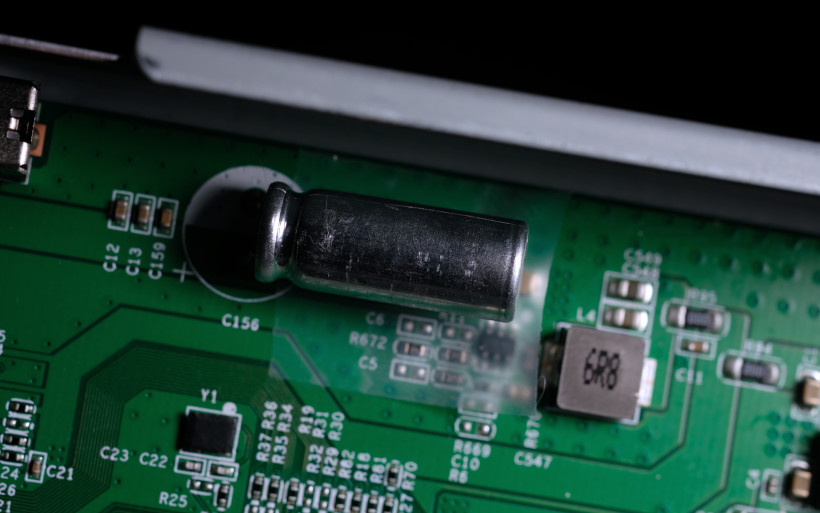 It all had to come down to noise rejection and how it affected what I’d heard back then. To simplify, Telegärtner’s switch used in-between my fidata deck and the inherently noisy Linksys WRT160N router was the barrier, which not only kept at bay electrical junk incoming from the former, but did so potently enough to introduce audible benefits. This report tackles a device functionally very similar to the M12 Switch Magic model, albeit sold at a fraction of its cost. It’s time to investigate whether Fidelizer EtherStream can perform audible magic of its own.
It all had to come down to noise rejection and how it affected what I’d heard back then. To simplify, Telegärtner’s switch used in-between my fidata deck and the inherently noisy Linksys WRT160N router was the barrier, which not only kept at bay electrical junk incoming from the former, but did so potently enough to introduce audible benefits. This report tackles a device functionally very similar to the M12 Switch Magic model, albeit sold at a fraction of its cost. It’s time to investigate whether Fidelizer EtherStream can perform audible magic of its own.
Build
Prior to going any further with this report’s product, it’s in order to introduce its maker Keetakawee Punpeng. He’s of Thai origin and a software engineer by education, probably the most known for his Fidelizer script. Upon asking how this app came to be, Keetakawee explained that during mid school years he developed the need to optimize his sluggish PC, which led to the PC Tweak 2001 program freely shared at one of local sites. Then this code morphed into Optimizer XP, and a decade later flourished into what’s today known as LiveTuner. The audio part started when Keetakawee decided to build himself a proper music server capable of going toe to toe with top shelf CD players. Just to know where he’s at on this count, Esoteric P-03/D-03 and several other digital sources with master clocks became his reference. Past the craze invoked by another costly audio optimization software, the Thai designer released his basic Fidelizer software for free, and then ended up with its Plus/Pro upgrades for full-time support.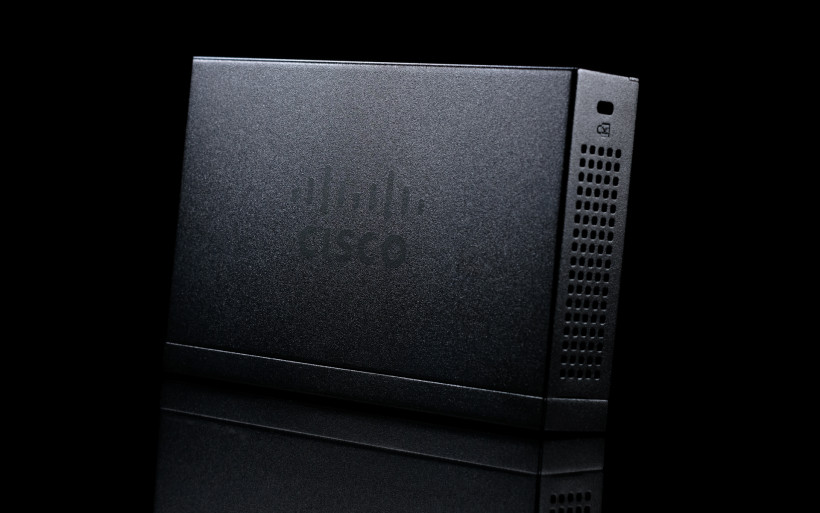 Keetakawee described himself as a passionate computer enthusiast, and also an audiophile fortunate to experience top shelf audio luxury via his friends. Considering his ongoing work, he must’ve gained quite a few along the road. Although I’ve been familiar with the Fidelizer software for quite some time, its homepage also lists custom ROMs for various digital audio players aka DAPs, and several physical components meant to work together in synergistic fashion; Nimitra audio server, Nikola linear power supply and this report’s EtherStream network switch. Today’s tab at the Fidelizer homepage also confirmed my own findings related to sonic quality; in audio applications wired connections beat wireless, and playback from locally stored files wins over streamed music. Keetakawee additionally explained that streaming services naturally can’t be upgraded, hence our systems have to work on whatever is sent to them. However, network switches with their solid buffers act as gateways capable of improving integrity of data incoming from the www. Although below I had nothing to say on the matter due to streaming services off my diet, at the same time I had no valid reasons to doubt info Fidelizer’s CEO provided.
Keetakawee described himself as a passionate computer enthusiast, and also an audiophile fortunate to experience top shelf audio luxury via his friends. Considering his ongoing work, he must’ve gained quite a few along the road. Although I’ve been familiar with the Fidelizer software for quite some time, its homepage also lists custom ROMs for various digital audio players aka DAPs, and several physical components meant to work together in synergistic fashion; Nimitra audio server, Nikola linear power supply and this report’s EtherStream network switch. Today’s tab at the Fidelizer homepage also confirmed my own findings related to sonic quality; in audio applications wired connections beat wireless, and playback from locally stored files wins over streamed music. Keetakawee additionally explained that streaming services naturally can’t be upgraded, hence our systems have to work on whatever is sent to them. However, network switches with their solid buffers act as gateways capable of improving integrity of data incoming from the www. Although below I had nothing to say on the matter due to streaming services off my diet, at the same time I had no valid reasons to doubt info Fidelizer’s CEO provided.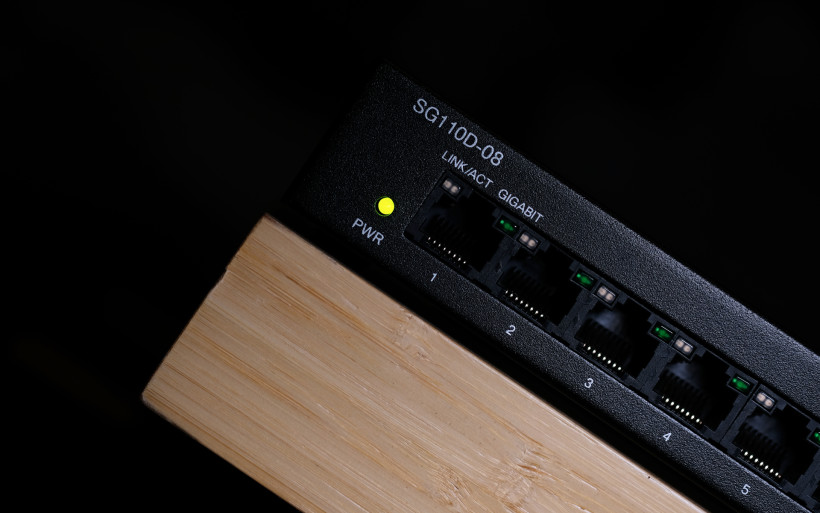 Fidelizer EtherStream isn’t an audio product made from scratch by our Thai engineer, but internally modified Cisco SG110D-08 donor, cherry-picked due to its non-PoE profile and transparency. The loaner Srajan sent over was thus externally a regular switch packed in its original Cisco cardboard, inside of which several screws and a medical-grade SMPS critter were found. There was nothing to gush over, however for today’s ask I expected nothing else but just basics. The product itself measures (D x H x W) 10 x 3.3 x 16cm, weighs 450g and its external dress code is steel, which nicely ups the ante on robustness and leaves quite the industrial impression. Perforations on both cheeks help with heat dissipation, four rubber feet provide stability. EtherStream’s forehead houses a green power LED plus eight RJ45 sockets, whereas the main on/off knob and 12V DC inlet are found on the business end. The device feels pleasantly substantial and is very compact.
Fidelizer EtherStream isn’t an audio product made from scratch by our Thai engineer, but internally modified Cisco SG110D-08 donor, cherry-picked due to its non-PoE profile and transparency. The loaner Srajan sent over was thus externally a regular switch packed in its original Cisco cardboard, inside of which several screws and a medical-grade SMPS critter were found. There was nothing to gush over, however for today’s ask I expected nothing else but just basics. The product itself measures (D x H x W) 10 x 3.3 x 16cm, weighs 450g and its external dress code is steel, which nicely ups the ante on robustness and leaves quite the industrial impression. Perforations on both cheeks help with heat dissipation, four rubber feet provide stability. EtherStream’s forehead houses a green power LED plus eight RJ45 sockets, whereas the main on/off knob and 12V DC inlet are found on the business end. The device feels pleasantly substantial and is very compact.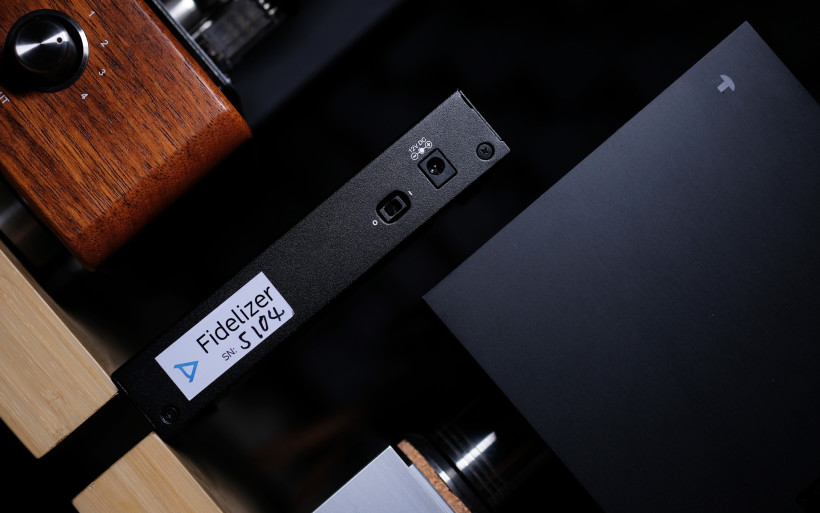 One Fidelizer sticker aside, one couldn’t tell that EtherStream is a product meant for usage specifically in audio, but its inside says otherwise. Two screws were all it took to get there. If we’ll take quality solder type into account, today’s sports five mods under its hood. Its input capacitor was upgraded with a unit of lower impedance. Safety resistors on DC input, power regulation and insolation transformer were replaced with counterparts by Vishay/Dale. Internal crystal clock was removed and its Japanese kin of higher quality was installed. PSU was re-energized with tantalum caps to reduce noise and interference in CPU.
One Fidelizer sticker aside, one couldn’t tell that EtherStream is a product meant for usage specifically in audio, but its inside says otherwise. Two screws were all it took to get there. If we’ll take quality solder type into account, today’s sports five mods under its hood. Its input capacitor was upgraded with a unit of lower impedance. Safety resistors on DC input, power regulation and insolation transformer were replaced with counterparts by Vishay/Dale. Internal crystal clock was removed and its Japanese kin of higher quality was installed. PSU was re-energized with tantalum caps to reduce noise and interference in CPU.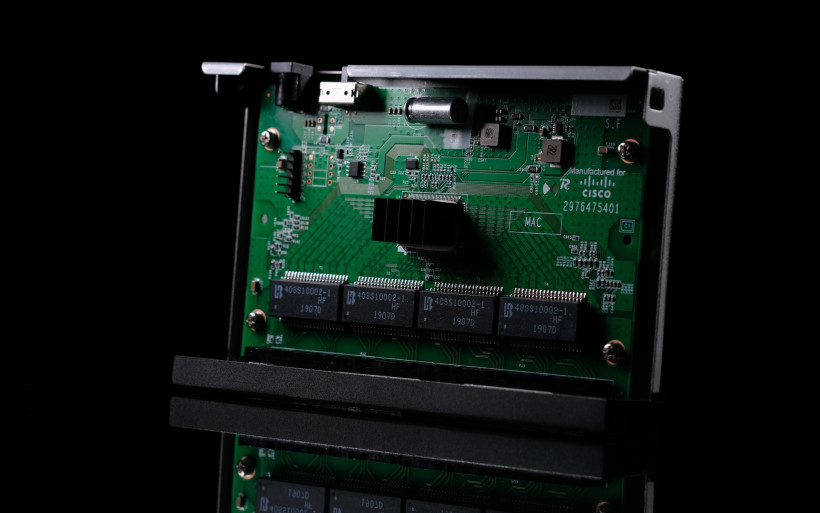 The no longer manufactured Cisco SG110D-08 model here in PL can be had for roughly $40 or so, and its mod parts most likely wouldn’t leave my wallet dry either. Still, I think that EtherStream’s price tag shouldn’t make anyone feel ripped off. It had to take a good while for Keetakawee to discover which parts to upgrade and by what exactly. He had the necessary know-how and skill vast majority of enthusiasts don’t. Needless to say, his expertise plus labor is what those not capable of minting their own mods have to see on the total tab just as everything else. Not only this, the man’s switch is also one of the most affordable such audio devices available on the market, audiophile switches by Telegärtner or Aavik are significantly costlier.
The no longer manufactured Cisco SG110D-08 model here in PL can be had for roughly $40 or so, and its mod parts most likely wouldn’t leave my wallet dry either. Still, I think that EtherStream’s price tag shouldn’t make anyone feel ripped off. It had to take a good while for Keetakawee to discover which parts to upgrade and by what exactly. He had the necessary know-how and skill vast majority of enthusiasts don’t. Needless to say, his expertise plus labor is what those not capable of minting their own mods have to see on the total tab just as everything else. Not only this, the man’s switch is also one of the most affordable such audio devices available on the market, audiophile switches by Telegärtner or Aavik are significantly costlier.
Sound
In order to review Fidelizer EtherStream, fidata HFAS1-S10U handled file transport from internal storage, then LampizatOr Pacific DAC (KR Audio T-100/Living Voice 300B + KR Audio 5U4G Ltd. Ed.) took over to pass the signal either to Bakoon AMP-13R, or Thöress DFP line stage and then to AGD Productions Vivace monos. From there a Boenicke Audio S3 speaker cable stepped in to connect to either Boenicke Audio W11SE+ floorstanders, or Spendor Classic 1/2. All amps were powered by LessLoss C-MARCs from a GigaWatt PC-3 SE EVO+ power conditioner, fronted by the same manufacturer’s LC-3 EVO cable. Interconnects used were Boenicke Audio IC3 CG and Amber-modded Audiomica Laboratory Erys Excellence if needed. The USB chain included the full iFi audio stack; a micro iUSB3.0, nano iGalvanic3.0, three Mercury USB cables in-between plus one 9V iPower.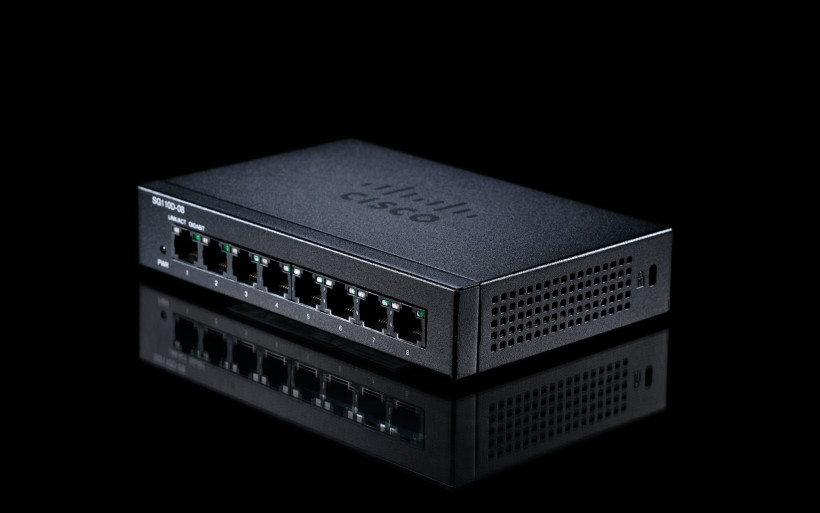 The network setup was utmost easy due to Fidelizer EtherStream’s plug&play nature. Even individuals completely not tech-savvy will handle this product. My Linksys WRT160N router’s LAN out connected to today’s first RJ45 socket via a regular 1m throwaway cable, whereas the second such cord went from the latter’s 2nd Ethernet socket to my fidata deck’s network input. Easy-peasy. Auditions with and without this report’s product in the network chain were the goal. I had to make as many swaps as necessary to get a proper aural fix, and after each change I had to restart my router and transport to empty their buffers. The overall procedure was straightforward and fairly quick. Just to be clear, my router doesn’t have access to the www. It serves only as a measure to control my fidata machine.
The network setup was utmost easy due to Fidelizer EtherStream’s plug&play nature. Even individuals completely not tech-savvy will handle this product. My Linksys WRT160N router’s LAN out connected to today’s first RJ45 socket via a regular 1m throwaway cable, whereas the second such cord went from the latter’s 2nd Ethernet socket to my fidata deck’s network input. Easy-peasy. Auditions with and without this report’s product in the network chain were the goal. I had to make as many swaps as necessary to get a proper aural fix, and after each change I had to restart my router and transport to empty their buffers. The overall procedure was straightforward and fairly quick. Just to be clear, my router doesn’t have access to the www. It serves only as a measure to control my fidata machine.  Having reviewed several network components in the past, I partially knew what to expect of today’s. To my understanding such products reduce incoming noise, or at least that’s my take on their input, based on familiarity with Telegärtner’s switch and fidata’s LAN cable. Not only this, their audible action is also the common ground for i.e. USB sorters and power cables. On the fundamental level, noise lets in the same well-diagnosed culprits regardless of a juncture where it occurs; excess grain, resolution loss, textural paleness, abnormally chiseled virtual sound sources, imaging flatness, shaky bass, upstairs itch and overall nervousness. That’s why various tweaks’ effectiveness stacks, whereas today’s EtherStream quickly emerged as yet another product that pushed the silent envelope a fair bit further.
Having reviewed several network components in the past, I partially knew what to expect of today’s. To my understanding such products reduce incoming noise, or at least that’s my take on their input, based on familiarity with Telegärtner’s switch and fidata’s LAN cable. Not only this, their audible action is also the common ground for i.e. USB sorters and power cables. On the fundamental level, noise lets in the same well-diagnosed culprits regardless of a juncture where it occurs; excess grain, resolution loss, textural paleness, abnormally chiseled virtual sound sources, imaging flatness, shaky bass, upstairs itch and overall nervousness. That’s why various tweaks’ effectiveness stacks, whereas today’s EtherStream quickly emerged as yet another product that pushed the silent envelope a fair bit further.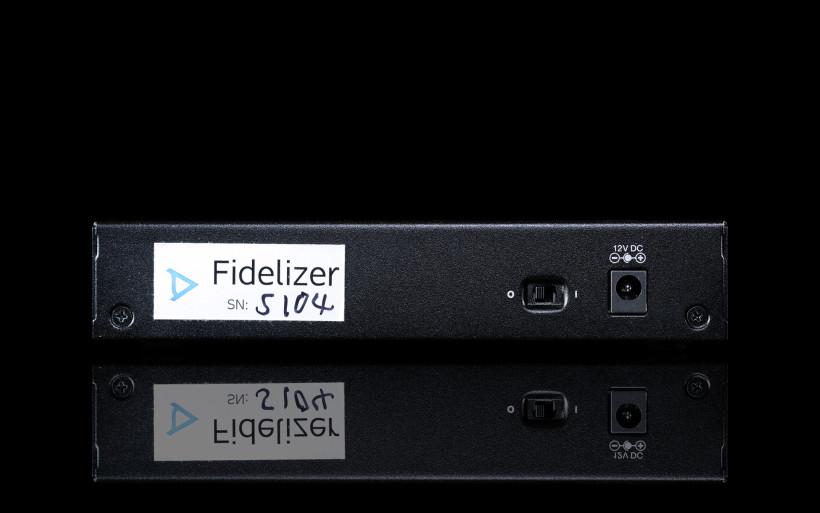 I can’t say whether EtherStream’s input was easily mapped because I knew a thing or two about it, or perhaps because Keetakawee was in no rush with this review’s loaner. This put me in the rare position where not pressured by time I could allow it to naturally settle in and reveal its contribution. The important bit is that it was rather obvious and present since day one. It’s factual to say that today’s normalized sonics in my room; it took the edge off, separated virtual shapes better and rounded them a bit, tightened bass, injected extra colour, deepened sensation of space behind the first row and upped the ante on backdrop cleanliness to reveal and magnify more bits suspended in air. With EtherStream engaged, music sounded a tad milder, denser and more liquid. It gained several extra points on that unmistakable sophistication people such as myself are sensitive to.
I can’t say whether EtherStream’s input was easily mapped because I knew a thing or two about it, or perhaps because Keetakawee was in no rush with this review’s loaner. This put me in the rare position where not pressured by time I could allow it to naturally settle in and reveal its contribution. The important bit is that it was rather obvious and present since day one. It’s factual to say that today’s normalized sonics in my room; it took the edge off, separated virtual shapes better and rounded them a bit, tightened bass, injected extra colour, deepened sensation of space behind the first row and upped the ante on backdrop cleanliness to reveal and magnify more bits suspended in air. With EtherStream engaged, music sounded a tad milder, denser and more liquid. It gained several extra points on that unmistakable sophistication people such as myself are sensitive to.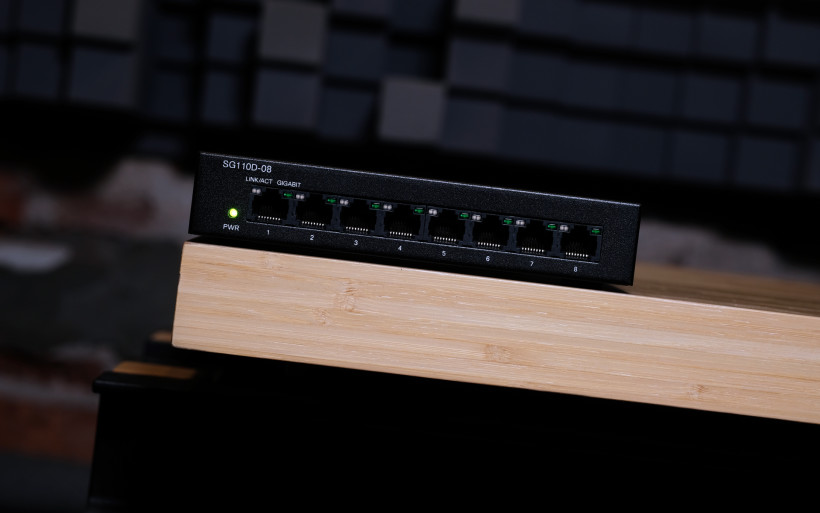 Past all above findings it was clear to me that the EtherStream worked as intended and did what it’s supposed to. On these counts Keetakawee’s mod struck me as quite similar to Telegärtner’s product, however I’d have to compare them head to head to know which one did more, by how much and where exactly. Although this route was off limits, there was one exercise extra I could do. The EtherStream was put against my several times as costly reference USB chain on daily job in-between my fidata HFAS1-S10U and LampizatOr Pacific DAC, just as was M12 Switch Magic in the past. Although pricier, Telegärtner’s product in this specific scenario was a bit behind the overgrown USB link by iFi audio, and my Pacific’s naturally high compliance with USB and power tweaks didn’t help this switch either. Still, the goal was the former’s performance relative to behaviourally similar yet functionally different set of tweaks. That’s why today’s engaged had iFi’s chain disengaged and vice versa. It also should be clearly mentioned that my USB items and EtherStream don’t render each other as redundant. Although similar on sonics, they operate in different places of my audio rig, and their cleaning service adds up. Our setups are prone to noise incoming from many directions after all.
Past all above findings it was clear to me that the EtherStream worked as intended and did what it’s supposed to. On these counts Keetakawee’s mod struck me as quite similar to Telegärtner’s product, however I’d have to compare them head to head to know which one did more, by how much and where exactly. Although this route was off limits, there was one exercise extra I could do. The EtherStream was put against my several times as costly reference USB chain on daily job in-between my fidata HFAS1-S10U and LampizatOr Pacific DAC, just as was M12 Switch Magic in the past. Although pricier, Telegärtner’s product in this specific scenario was a bit behind the overgrown USB link by iFi audio, and my Pacific’s naturally high compliance with USB and power tweaks didn’t help this switch either. Still, the goal was the former’s performance relative to behaviourally similar yet functionally different set of tweaks. That’s why today’s engaged had iFi’s chain disengaged and vice versa. It also should be clearly mentioned that my USB items and EtherStream don’t render each other as redundant. Although similar on sonics, they operate in different places of my audio rig, and their cleaning service adds up. Our setups are prone to noise incoming from many directions after all. 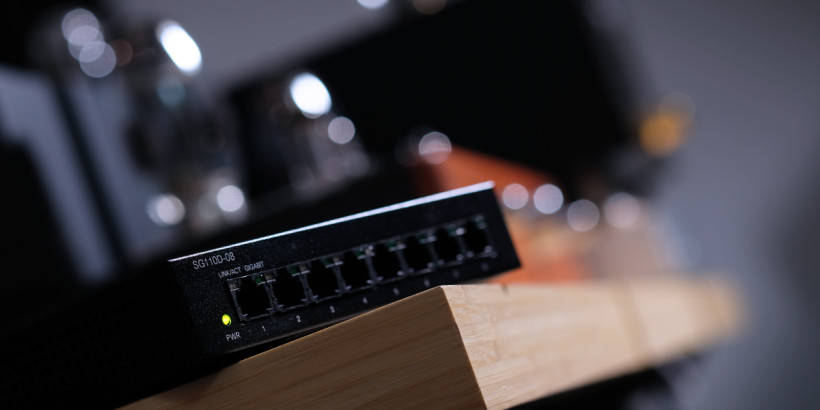 After several back and forths between Fidelizer EtherStream and my iFi chain, the disparity between them narrowed down not to their different voicings but cleaning efficacy. Although sonic changes introduced by the USB pipeline and Keetakawee’s product were to an extent quite alike, iFi’s stack simply did audibly more of the same thing. The substantial price gap between contestants made this fight very much unfair, which is why next the EtherStream had to combat each iFi box separately.
After several back and forths between Fidelizer EtherStream and my iFi chain, the disparity between them narrowed down not to their different voicings but cleaning efficacy. Although sonic changes introduced by the USB pipeline and Keetakawee’s product were to an extent quite alike, iFi’s stack simply did audibly more of the same thing. The substantial price gap between contestants made this fight very much unfair, which is why next the EtherStream had to combat each iFi box separately. nano iGalvanic3.0 reviewed at these pages is an interesting case. It provides sorting qualities typical for noise-killers, but also boosts sonics with its own snappy somewhat lean behaviour. The EtherStream sounded meatier, gentler, a bit darker, and it didn’t do as much in comparison, but now the disparity between both was small. Not only this, iFi’s isolator was supported by two USB cables by the same manufacturer, whereas today’s married to regular Ethernet throwaways was limited. I think that with two fine LAN cables thrown in the mix, the fight could end with even score on effectiveness.
nano iGalvanic3.0 reviewed at these pages is an interesting case. It provides sorting qualities typical for noise-killers, but also boosts sonics with its own snappy somewhat lean behaviour. The EtherStream sounded meatier, gentler, a bit darker, and it didn’t do as much in comparison, but now the disparity between both was small. Not only this, iFi’s isolator was supported by two USB cables by the same manufacturer, whereas today’s married to regular Ethernet throwaways was limited. I think that with two fine LAN cables thrown in the mix, the fight could end with even score on effectiveness.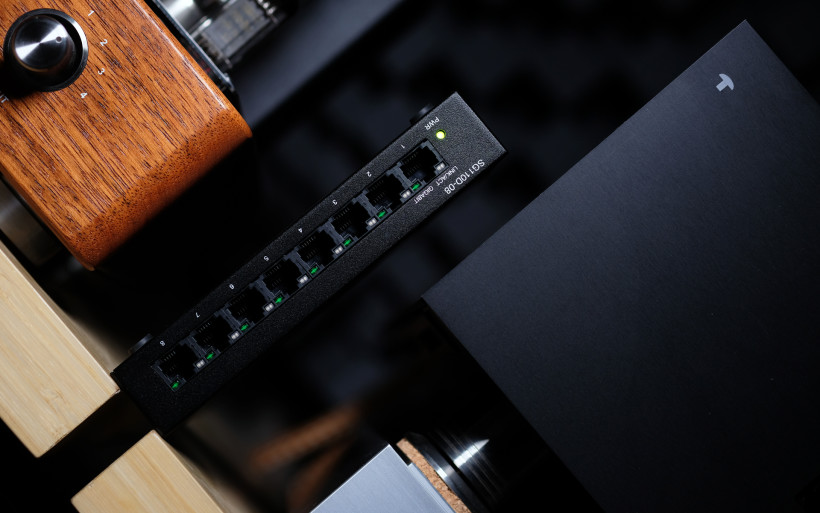 The micro iUSB3.0 reclocker and EtherStream were quite alike voiced to my ears. The former’s action was more audible, but as previously not by a lot. Once again I thought that better LAN cables could even things out a fair bit, but today’s skirmishes with my USB boxes weren’t important per se as one doesn’t replace the other. Their action stacks. These investigations were conducted mainly to ease my own curiosity, but also to find out whether Keetakawee’s box could keep up with two fine examples of iFi audio’s USB engineering and remain just as relevant elsewhere. If today’s put up against USB sorters strikes you as odd, all fundamentally shave excess noise and make music more liquid, that’s their common ground. That’s why the main disparity was in their different junctures of my setup, not audible job. Even handicapped by stock LAN cables and away from streaming services, Fidelizer’s deck held its ground very well all things considered. What this switch was able to accomplish in my room, was already not too shabby for its coin and sub-optimal conditions. Something tells me that supported by better LAN cables, PSU, and used with streaming services, it would go faster, bigger and bolder, but that’s a story for another time. What’s important now is EtherStream’s audibly potent and beneficial input, with no strings attached. Yes, please.
The micro iUSB3.0 reclocker and EtherStream were quite alike voiced to my ears. The former’s action was more audible, but as previously not by a lot. Once again I thought that better LAN cables could even things out a fair bit, but today’s skirmishes with my USB boxes weren’t important per se as one doesn’t replace the other. Their action stacks. These investigations were conducted mainly to ease my own curiosity, but also to find out whether Keetakawee’s box could keep up with two fine examples of iFi audio’s USB engineering and remain just as relevant elsewhere. If today’s put up against USB sorters strikes you as odd, all fundamentally shave excess noise and make music more liquid, that’s their common ground. That’s why the main disparity was in their different junctures of my setup, not audible job. Even handicapped by stock LAN cables and away from streaming services, Fidelizer’s deck held its ground very well all things considered. What this switch was able to accomplish in my room, was already not too shabby for its coin and sub-optimal conditions. Something tells me that supported by better LAN cables, PSU, and used with streaming services, it would go faster, bigger and bolder, but that’s a story for another time. What’s important now is EtherStream’s audibly potent and beneficial input, with no strings attached. Yes, please.
Summary
To me it’s quite reasonable to tackle various audio tweaks past sorting all major hardware and, as a product not crucial by any means, Fidelizer EtherStream doesn’t change this view. However, today’s unlocks the option to fly in the financially sane realm way below far costlier audiophile switches, which turns accessibility into its sharpest suit. Of all such devices I came across, Keetakawee Punpeng’s EtherStream not only is by far the most affordable to date, but also effective enough to take serious interest in it, if file playback based on LAN is how you roll.
As an utilitarian network product above all else, Fidelizer EtherStream scores low on bling and high on build quality and usefulness. If this compact easy to operate mod of a regular switch strikes you as overpriced, I say quite the contrary considering what it does and how. I don’t possess skills and knowledge necessary to land such a device on my own, Keetakawee clearly does, and doesn’t charge an arm and leg for it on top of that. But most importantly, he pushed this review’s box far enough on sonics to make it meaningful and generous on price-to-performance ratio. If you happen to be on a lookout for a cost-effective network switch fit to work in audio, to give a talented Thai engineer’s EtherStream a chance sounds like a solid plan to me. ‘Til next time!
Associated Equipment:
- Amplifier: Bakoon AMP-13R, AGD Productions Vivace
- DAC: LampizatOr Pacific (KR Audio T-100 / Living Voice 300B + KR Audio 5U4G Ltd. Ed.)
- Speakers: Boenicke Audio W11 SE+, Spendor Classic 1/2
- Transport: fidata HFAS1-S10U
- Line stage: Thöress DFP
- Speaker cables: Boenicke Audio S3, LessLoss C-MARC
- Interconnects: Boenicke Audio IC3 CG
- Power components: Gigawatt PC-3 SE EVO+, Gigawatt PF-2 + Gigawatt LC-2 MK2 + Audiomica Laboratory Ness Excellence/LessLoss C-MARC
- USB components: iFi audio iGalvanic3.0, iFi audio micro iUSB3.0, 3x iFi audio Mercury3.0
- Rack: Franc Audio Accesories Wood Block Rack
- Music: NativeDSD
Retail prices of reviewed components in EU (excl. tax):
- Fidelizer EtherStream: $395
Manufacturer: Fidelizer




